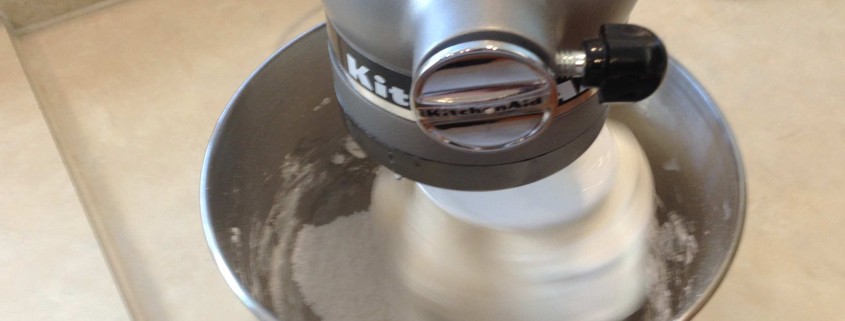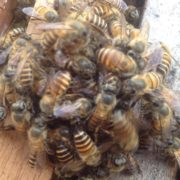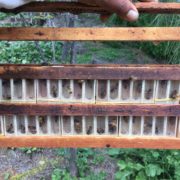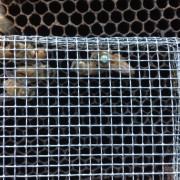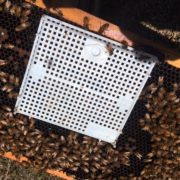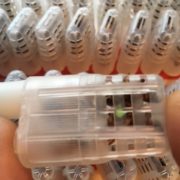Queen Cage Candy
Queen cage candy is the primary food source for both the queen bees and the attendant bees when they are shipped through the USPS mail or UPS. The candy is also a key element of the queen introduction. Worker bees chew through the candy – typically over the course of a couple of days – while the colony becomes accustomed to the pheromones of the new queen, assuring her safe acceptance.
The history of shipping queen bees via mail goes all the way back to the 1860’s. Queen producers knew that they needed to include some kind of food for the queen bees and attendants during shipment. The natural and obvious choice was honey; and the first series of shipments included little pieces of comb honey in the containers. You can imagine the messy scenes at the post office as a result of this approach. Surely enough, in 1872, tired of leaky packages, the postal authorities banned shipment of queens through the mail. The post office, however, never really enforced this ruling. And beekeepers – being beekeepers – never really gave up trying new methods of shipping queen bees.
The pioneer of queen cage candy was a man named Good, who in the early 1880’s proposed using a mixture of cold honey and sugar to create a dripless honeybee food. Shortly thereafter beekeepers fine-tuned the concept, eventually settled on a mixture of sugars for the candy. To this day, some beekeeping books refer to queen cage candy as “Good” candy in honor of this visionary beekeeper.
Today’s queen cage candy typically calls for a mixture two types of sugar, a liquid inverted sugar called nulomoline, plus a dried sugar, which is either powdered sugar or another type of dried sugar called drivert. The candy-making process itself is not too difficult. The liquid sugar is warmed, and the dried sugar is added until the consistency is just right. The goal is to achieve the perfect balance of firmness and suppleness in the candy. If the candy is too hard the bees cannot chew through it. If the candy is too soft it can melt or drip onto the queen. Here is where the queen producer becomes a professional candy maker, carefully crafting the ideal sugary food – not for average people, but instead for insect royalty.

